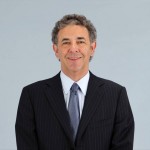Avery Moves Into Medicine ACQUISITION: Label maker buys wound and skincare company.
By Iris Lee Staff Reporter
Avery Dennison Corp. has taken a step into new territory with its acquisition last month of Finesse Medical Ltd., an Ireland based manufacturer of wound and skincare products.
Glendale based Avery built its reputation on self adhesive labels and pressure sensitive materials manufacturing. But it has pursued an acquisition strategy to create its industrial and health care materials division. Finesse Medical will become part of Vancive Medical Technologies, the medical solutions arm of the division.
“Overall, the acquisition will allow us to expand our product portfolio and manufacturing services for health care OEMs,” said Kirsten Newquist, general manager of Vancive Medical Technologies. “Finesse complements our existing production capabilities with its converting, packaging and regulatory management expertise. It will also broaden our portfolio in wound care with its silicone gels, foams and superabsorbent materials.”
New but familiar
Avery did not disclose the price of the acquisition, but it said Finesse Medical generated more than 15 million euros, or about $16.7million, in revenue last year. This will be a significant addition to Vancive Medical, which has hovered around $70 million in annual revenue in the last few years.
Finesse currently manufactures a range of products, including polyurethane and silicone foam dressings used for burns and ulcers. In skincare, the company manufactures creams and gels to treat skin conditions that may develop with the frequent use of adhesives.
But perhaps what most attracted Avery was Finesse’s manufacturing services. The company provides controlled environment production services for other companies that are trying to outsource product design and manufacturing development services.
Finesse has eight clean room facilities in Ireland that are ISO certified, where they can provide subcontracted manufacturing services like bottle filling and sterilization of products. The company can support product development from start to finish, starting with material sourcing and biocompatibility testing to sterile packaging and CE marking, a mandatory conformity mark for products sold in Europe.
James Cassel, co founder of Cassel Salpeter & Co. investment bank in Miami, said when companies like Avery Dennison venture into a new market, they do it cautiously, and do not stray too far from what they already know.
“Products they are getting into are in many aspects similar to their core business,” said Cassel. “From a due diligence standpoint, they also have experts on staff that can go in and evaluate a good buying opportunity.”
Overall, Cassel believes Avery Dennison is making a long term play into the new market. “They are an established company that’s been around for 80 years. They are an adhesive company that has become a packaging company,” said Cassel. “If you think about it, health care is such a growing area, it’s a natural transition.”
Veronica Lau, the director of Glendale Memorial Wound Care Center, agrees that this is a rapidly growing market.
“We are seeing a dramatic increase in all areas of wound care due to increasing diabetic and obese populations,” she said. “The aging population also deals with lots of trauma that bring them here.”
According to Lau, about 30 percent of her operation costs go into purchasing materials for the wound care center.
However, a growing industry also means fierce competition. Lau said. Her center has its own wound care council that meets with vendors to find out what products are in the market.
“I heard there’s something like 25 new dressings that are introduced every day,” said Lau. “But the market is such that materials are being used not only in outpatient centers like ours but for in patient and other providers.”
Internal organization
At first glance, the health care materials sector seems out of place at Avery. After all, the industrial and healthcare materials division only accounts for 7 percent of the company’s $6.1 billion of annual revenue. The rest is generated by the company’s best known products labels, price tags, consumer packaging and logistics tags for retailers.
Although health care represents a new application, Avery’s tried and true practices and strategies align well with industry. It’s an industrial supplier, selling mostly to other manufacturers rather than consumers. Also, the company works with medical clients to develop products, a system Avery is well familiar with in its other industrial sectors.
For example, earlier this month Avery opened a research lab in Santa Clara to develop packaging in conjunction with electronics manufacturers. And in the medical sector, Vancive worked with manufacturers to develop a blended antimicrobial material spread onto an adhesive to make a thin film dressing.
The company’s industrial and healthcare materials division sector, created at the end of last year, looks like a hodge podge. It includes performance tapes, fasteners, internal adhesives and now health care businesses.
Avery’s last acquisition before Finesse was Yongle Tape Company Ltd., a manufacturer of specialty industrial tapes in China. Avery explained in the latest earnings filing that while the purchase price was set at $190 million, the agreement includes additional opportunities for more to be paid if the business hits certain performance targets.
In a recent analyst call, Avery’s industrial and healthcare materials General Manager Mike Johansen explained the thinking behind the creation of the new division.
“This business is really an application specified function materials business that serves across the different business, particularly markets such as automotive and electronics,” he said. “They also get very heavily specified by either the OEMs or their tier ones or their development partners.”
Acquisition risks
Cassel said risks accompany any merger or acquisition.
“Sometimes when you are going into a new area, you can end up paying a high multiple,” he noted. “Integration can also be an issue. But looking at their history, they’ve done venture type of investing so, that lessens their risks.”
At the analysts meeting, Avery’s Johansen said there were more acquisitions on the way for the company.
“We’re investing heavily in terms of our internal capabilities and on our expansion globally,” he said. “But also, we’re looking to fill a pipeline of acquisitions that we think are actually going to accelerate our position in these markets.”
Cassel said for large industrial companies, it’s hard to grow organically because they are limited to the rate at which the whole economy is growing. So, despite the fact that Avery Dennison has tons of internal resources, growing through acquisition makes more business sense.
“To take a good product and make it better is sometimes easier than doing it from scratch,” said Cassel. “You take a product and increase units and improve on it. You can expand that way.
“You have to see it as a bullseye in a target practice,” Cassel continued. “At the center of the target is the adhesives, but the company is now moving out to the concentric circles, not too far from what it does best.”
Click here to view original article.




